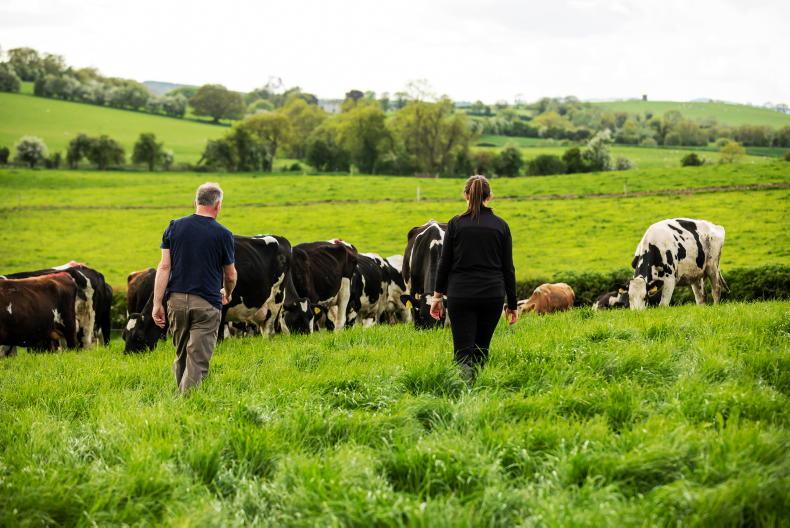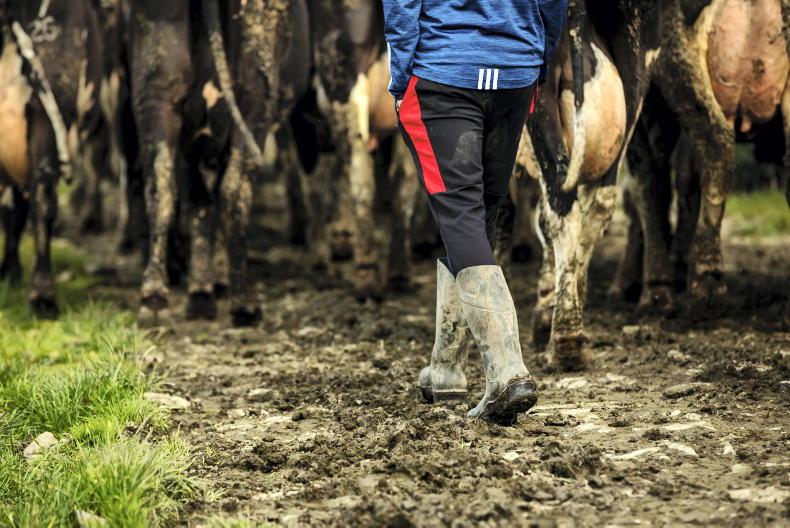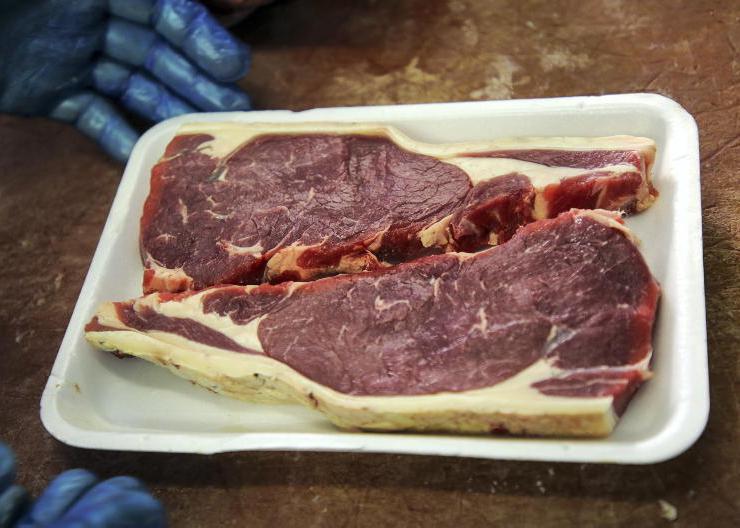The Teagasc/FBD student of the year awards took place this week. Like all such events, it was online and virtual.
In this case, that was appropriate for a whole range of reasons - the main one being that many of the finalists had completed their studies online, and not just because of COVID-19.
The finalists had studied through a variety of portals, from Ballymote to Ballyhaise, Macroom to Kildalton.
There was a wide wingspan in age and sectoral speciality, with a strong mix of women and men. And they had a bewildering variety of current and previous jobs.
Village People
Looking through the list, it starts to resemble a version of the Village People.
The winner Deirdre McMahon is a former nurse, who is now in partnership with her husband Bryan Hynes (formerly of this parish), having exchanged her stethoscope for a milk cluster.
Laura Hannon was another finalist who trained and practiced as a nurse before going farming.
Shane O’Brien was another high-flyer - literally. He has left the life of an airline pilot behind to join his parents on their mixed cattle, sheep and tillage farm. He won the drystock category.
No Village People tribute act would be complete without a soldier
Then there's Padraic Cullen, dairy farmer and fireman in Kildare, who completed the green cert at Teagasc headquarters in Oak Park, Co Carlow.
No Village People tribute act would be complete without a soldier, I hear you say. Step up Colin Cahalan, who competed the green cert part-time programme in Athenry while being a full-time member of the Defence Forces.
And, yes, there is a construction worker. But even here the story has a twist, because Niall Healy is originally from Dublin, but has become involved in a farm in Tipperary through a succession partnership with a relative.
Educational streams
How about a postman for our troupe? Step forward Mark Miley from Roscommon, who is working full-time with An Post while helping on his family farm, which hosts an award-winning pedigree sheep flock.
Finally, we have a physiotherapist. I think we need one with all those physically demanding jobs.
Susan Stephenson from Leitrim completed the distance education green certificate in Ballymote and is running a drystock farm with her husband.
There is a massive advantage in having educational streams that are not residential or full-time for farming. It’s fair to say it’s a necessity.
The stark reality is that most farms cannot afford to carry two generations
The stark reality is that most farms cannot afford to carry two generations - there isn’t enough capacity to pay two incomes.
And the days of being the son or daughter at home, working all hours for a fill of diesel in the car and not much more than pocket money to carry you through the weekend, are long gone.
And we seem to have moved on from the half-step, where the younger generation get work part-time with agri-contractors or relief milking.
And it’s often a career far removed from the traditional off-farm jobs, those with the hands-on skillset associated with farmers - working in engineering, fabrication or construction.
Now, a significant group of people gain employment and experience at a high level. They come to farming as a career by choice and bring a new skill set to the table with them.
I believe that the calving shed under Deirdre McMahon’s control has a level of organisation and hygiene that betrays her previous profession and is a model operation.
Evolving education
The Irish education system is surely flawed, but has served the country well over the last 50 years or so since free education was introduced.
When the certificate in farming, the green cert, became the standard educational requirement and a necessity to access, numbers attending agricultural colleges peaked in the '70s and '80s.
I chose Rockwell in Tipperary, pretty randomly as I recall, for my year away. Others from around me in Wexford were scattered from Multyfarnham in Westmeath to Gurteen (like Rockwell in Tipperary), but most went to Kildalton, in Piltown, on the far side (for us) of Kilkenny.
There were about 120 of us in Rockwell. Most of us were fresh out of Leaving Cert, but it was more like being in a boarding school than a third-level educational college. We were locked up at night, although there were a few breakouts.
Low bar
The college was adjacent to the secondary school (still there) and a CERT catering college was also on site.
One wag remarked that we were there to grow the food, the CERT lads prepared it, the boarding secondary students ate most of it and we were all paying for the privilege of being there!
It seemed to me that the level of education was designed to ensure no child was left behind - the bar was set pretty low.
And that was understandable, as the curriculum had been established in the 1970s, when many kids were leaving school well before Leaving Cert.
Younger readers might infer that the Inter(mediate) Cert(ificate) was the Junior Cert in old money, but most won’t have heard of the Group Cert, a State exam after second year held only in vocational colleges.
Many bright students had been demoralised from education because their talents had been masked behind a learning difficulty
It was often the end of formal education for lads who were heading home to farm.
Many bright students had been demoralised from education because their talents had been masked behind a learning difficulty. Dyslexia, dyspraxia and other learning difficulties had barely been heard of. So it made absolute sense that a qualification that was now essential for anyone hoping to make it in farming was pitched at a level that was attainable for all.
Change
It’s all utterly changed now. By the turn of the century, Rockwell was only attracting 20 students a year. It closed in 2002, as did Multyfarnham and Warrenstown. We had earlier lost Monaghan and Athenry.
We went from eleven residential colleges to four - Kildalton, Pallaskenry in Limerick, Gurteen and Ballyhaise in Cavan, with Clonakilty and Mountbellew evolving to non-residential colleges. Agriculture was regularly talked of as a 'twilight industry' as the Celtic Tiger roared.
But then the economy collapsed and thousands decided to return to farming and sought education. The system couldn’t cope with the demand for educational places.
Teagasc was trying to cope with a static budget and, like other State and semi-State bodies, had a moratorium on recruitment imposed on them.
While distance courses were in place, numbers were limited. Zoom meetings were still a twinkle in Eric Yuan’s eye.
Points for third-level agricultural courses soared year to year. Some creative solutions emerged around the country.
Westport College of Further Education offered the first non-Teagasc-delivered green cert course.
Colaiste an Atha in Kilmuckridge in Wexford, a second-level school, followed suit, offering the course as a two-year day post-Leaving Cert (PLC) course.
Dominant supplier
Teagasc is still the dominant supplier of Green Cert courses, but there is a legitimate question as to whether this is the long-term best strategy for farming.
It’s essentially a question of resources. Teagasc is the primary research, advisory and education body for farming. Those are three separate (though linked) and very demanding roles.
The need for research has never been higher, across all sectors, as farming faces the need to reduce its carbon footprint and improve its relationship with the natural world it interacts with and is part of.
The need to get this research across to farmers is every bit as pressing, as fast adaptation of best practice across the widest possible range of farms is the only way we can meet our targets as a sector.
And discussion groups, knowledge transfer and the likes of the ASSAP programme show that Teagasc are superb in this capacity.
Benefits of sharing the burden
But just as Teagasc shares the advisory stage with private advisers, there are benefits to having it share the burden of delivering agricultural education with other educational establishments.
One, obviously, is location, as there are schools and colleges scattered all over the country, many already teaching a range of PLC courses.
Another is resources. The Department of Agriculture is the route through which public monies are forwarded to Teagasc to fulfil its triple role.
When these courses are offered through, for want of a better term, 'mainstream' educational facilities, the costs are carried by the Department of Education.
This looks to me like an opportunity to increase the offering of educational opportunities without taking funds from Charlie McConalogue’s stretched coffers.
Training on
All in all, we've come a long way from the 1940s when Macra, newly-formed, provided training to young farmers in country halls. But with the demands of farming increasing, further formal training will be part of the journey for the 2020 crop of graduates. There once was an attitude among many farmers that education and training was a box to be ticked, but something that shouldn't ge tin the way of getting out there and making money.
Now, the reality is that constant upskilling will be required to have a long and satisfying career in farming. Once, farmers might have said they couldn't afford to be out of the yard. Now, most realise they can't afford to stay in the yard. Peer-to-peer learning, whether it be through discussion groups, knowledge transfer groups or the new Signpost programme, will be at the heart of this education. The class of 2020, with their broad range of skillsets and life experience, have much to teach the rest of us. They aren't just students, they can be teachers too.











SHARING OPTIONS